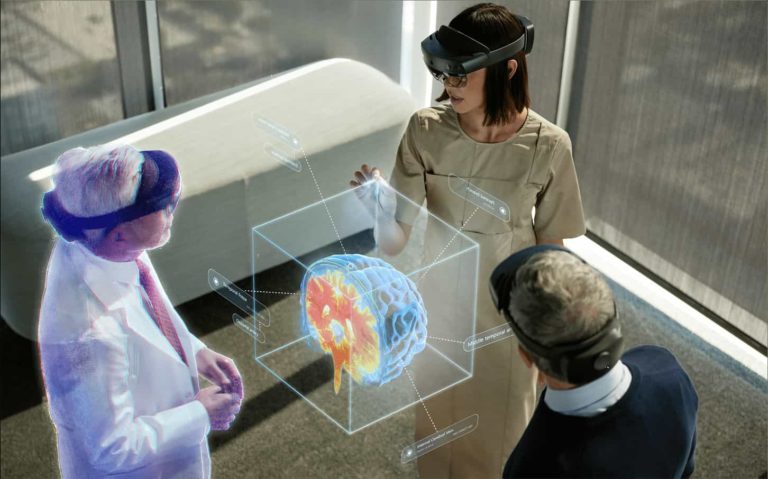
If you work with AR or VR, you know how XR tools can transform gaming or entertainment — in health care, their capabilities are even more impressive.
XR changes how medicine works, from training surgeons in lifelike virtual environments to helping patients understand complex procedures with interactive 3D visuals. As tech advances, you’ll find more opportunities to build tools that push innovation forward and make a real difference in people’s lives.
The Effectiveness of XR in Medicine
XR has become a breakthrough in the industry. From improving surgical precision to helping patients manage pain, its real-world impact is already taking shape.
1. Surgical Training and Simulation
With XR, you can practice complex procedures in a lifelike virtual setting, building muscle memory and precision without stepping into an operating room. Virtual reality boosts your spatial awareness of critical anatomical landmarks, which helps you navigate the body more confidently. That means faster operating time, less surgical trauma, and better patient outcomes.
2. Patient Education
XR isn’t just for surgeons — it’s also a powerful tool for patient education. With virtual reality, you can walk patients through complex procedures in an easy-to-understand and memorable way. It also allows users to explore medical products and services in a fully interactive environment, which creates a hands-on experience that builds trust and leaves a lasting impression.
3. Enhanced Imaging and Diagnostics
Combining XR tools with digital radiography unlocks a new level of clarity and precision in diagnostics. Radiologists can visualize abnormalities in 3D, making spotting issues quickly and accurately easier. Plus, digital radiography offers three times more dose effectiveness than computed radiography, which gives you better imaging quality with less radiation exposure — a win for providers and patients. As XR improves, it is increasingly enhancing diagnostic workflows and decision-making.
4. Pain and Anxiety Management
VR therapy significantly impacts chronic pain, post-traumatic stress disorder (PTSD), and pre-op anxiety management. Immersing patients in calming, controlled virtual environments helps them refocus and reduce their discomfort without relying solely on medication. It’s a simple, noninvasive approach that shows serious results and opens new doors for emotional and physical healing.
As more health care providers adopt these tools, there are exciting opportunities to develop personalized VR experiences to support long-term patient wellness.
How XR Reshapes the Industry
XR is shifting how medical professionals train and care for patients. With virtual trials, remote consultations, and immersive training, you can cut down on costs and reduce clinical risks. VR training becomes especially cost-effective at scale. For example, training 3,000 learners becomes 52% more affordable than traditional classroom sessions.
The more people you train, the more time and money you save through shorter sessions, fewer facilitators, and lower overhead costs. This scalable model also speeds up innovation and makes it easier to collaborate across teams, no matter where they’re located.
Future Potential and Opportunities for Developers
As XR continues to gain ground in health care, the demand for custom solutions is skyrocketing, especially in surgical tools, diagnostics, rehab, and mental health. There’s a growing need for user-friendly, Health Insurance Portability and Accountability Act (HIPAA)-compliant platforms that balance security with smooth, intuitive experiences.
From telemedicine to AI-powered diagnostics and real-time AR overlays, the opportunities are wide open. As a developer, you have a unique chance to bridge the gap between cutting-edge tech and real-world medical needs by creating tools that are as practical as they are innovative.
Challenges and Considerations
Despite XR’s abilities to advance health care, medical professionals may face a few challenges.
For instance, navigating strict regulations and protecting patient data can be complicated, especially when you work with sensitive personal information. Comfort is also a crucial consideration for supporting patient experiences. For example, head-mounted devices can get heavy, apply too much pressure or heat up during extended use.
In clinical settings, you’ll need high-fidelity hardware to ensure accuracy, which often comes with a steep price tag. For smaller clinics, keeping tools accessible and affordable is key.
Exploring the Impact and Potential for XR in Healthcare
If you’re passionate about XR, now’s the time to bring your skills into health care to shape the future of medicine. Stay connected and look for opportunities to collaborate — your next project could make a significant difference in someone’s life.
 Eleanor Hecks is Editor-in-Chief of Designerly Magazine where she specializes in design, development, and UX topics. Follow Designerly on X @Designerlymag.
Eleanor Hecks is Editor-in-Chief of Designerly Magazine where she specializes in design, development, and UX topics. Follow Designerly on X @Designerlymag.

